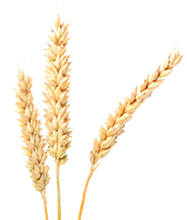"And it was evening and it was morning, one day" (Genesis 1:5).
Jewish Calendar Date
When G‑d created time, He first created night and then day. Therefore, a Jewish calendar date begins with the night beforehand. While a day in the secular calendar begins and ends at midnight, a Jewish day goes from nightfall to nightfall. Shabbat begins on Friday night, and a yahrtzeit lamp is kindled the evening before the yahrtzeit (anniversary of a person's passing), before nightfall. If the 10th of Iyar falls on a Wednesday, and a child is born Wednesday night after dark, the child's birthday is the 11th of Iyar.
On those dates wherein certain activities are restricted — such as working on Shabbat or major holidays — the restrictions go into effect the night beforehand.
[Most fast days begin at dawn ("alot hashachar"), and as such are an exception to this rule. Yom Kippur and Tisha b'Av, however, do begin at nightfall of the previous night.]
Though the day and its restrictions begin the night beforehand, many obligations associated with specific calendar dates — such as hearing the shofar on Rosh Hashanah, taking the Four Species on Sukkot, or hearing the daytime reading of the Megillah on Purim — must be performed during daylight hours only.1
Definition of Nightfall
While a day starts and ends at nightfall, the exact moment when night — and the next calendar date — begins is not clear.
The twilight period, from sunset ("shekiah") until three stars are visible in the sky ("tzeit hakochavim"), is an "iffy" time period, known as "bein hashmashot." Shabbat and all the holidays begin at sunset, the earliest possible definition of nightfall, and end when three stars appear in the sky the next evening, the latest definition of nightfall.
A rabbi should be consulted if a boy is born during bein hashmashot (to determine when the circumcision should be scheduled), or if a person passes away during this time (to determine the date when the yahrtzeit should be observed).











Join the Discussion